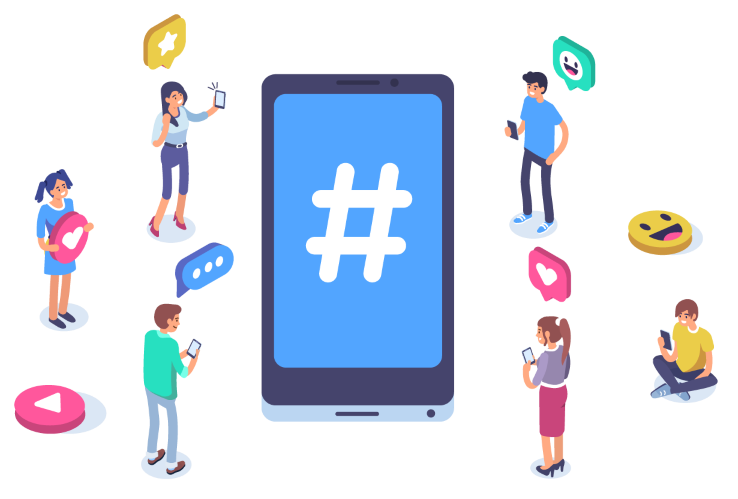ACD vs IVR in Call Centers: What’s the Difference?
by Kent Mao | Published On March 20, 2024 | Last Updated March 6, 2025

ACD and IVR systems play a key role in many call centers, from retail and banking to hospitals.
Call center managers know they need to invest in the right technology to streamline customer experiences, optimize team productivity and reduce costs. Unfortunately, understanding what solutions you need can be difficult in an environment filled with confusing terms and acronyms.
ACD and IVR are two of the most common features found in any call center. They’re both critical to ensuring companies can route calls effectively to the right agent or department, reducing wait times and improving efficiency.
While these telephony systems serve similar goals, they’re not the same. Here’s everything you need to know about the differences between ACD and IVR systems.
What is Automatic Call Distribution (ACD)?
An ACD system manages incoming phone calls and automatically routes them to the most suitable agent or department within an organization. These tools work behind the scenes in your call center to ensure calls are handled promptly and efficiently.
The precise functionality of an ACD system usually depends on the solution you purchase. While any basic system will offer access to call routing, queue management, and load balancing tools, more advanced technologies can feature support for omnichannel intelligent call routing, and may be able to integrate with existing software like CRM platforms.
How Does ACD Work?
ACD systems follow 3 basic steps to distribute calls within a call center:
- Caller identification: This involves obtaining information about the caller, such as language, location, and reason for calling.
- Call queueing: Determining the caller’s place in queue is the next step. This is usually calculated based on factors such as wait time, priority status and type of query.
- Call routing: Finally, the ACD system will route the call using pre-written rules. These rules are programmed into the software but can be changed.
ACD systems typically leverage algorithms and predefined rules to distribute calls based on factors like agent availability or skill sets. By analyzing data in real-time, ACD systems can determine the most appropriate agent or department to handle every call.
Benefits of ACD Systems
ACD systems form a core component of an effective call center and offer many benefits.
- Efficient call routing: ACD systems automatically assess data within your call center in real-time, to ensure calls are routed to the right department or agent.
- Enhanced customer service: The call routing and queuing features of ACD systems ensure companies can address customer requests faster and more efficiently, resulting in greater customer satisfaction. ACD also enables automated callback, which is a feature that many customers expect these days.
- Real-time monitoring and reporting: ACD systems can offer analytical tools that help you to understand the performance of your call center and optimize it.
- Workforce optimization: By efficiently routing incoming calls, an ACD system reduces agents’ idle time. It also ensures calls are routed logically, promoting fairness in workload distribution among team members.
What is Interactive Voice Response (IVR)?

IVR systems are automated systems that allow callers to interact with your call center without speaking to a live agent. Callers can navigate through a menu of options by pressing a key on their phone, or in the case of AI-enhanced IVR systems, using their voice.
While ACD systems use algorithms to determine how calls should be directed, IVR solutions allow callers to provide and access information using their keypad and navigate through a menu of options on their own.
How Does IVR Work?
IVR systems are designed to give callers self-service options they can choose from, reducing the need for human intervention and ensuring customers can choose their own path for service. IVRs are configured with a menu of options and sometimes include advanced self-service features, like paying a bill or booking an appointment.
IVR systems can respond to common queries with pre-recorded information about product features or common issues. They can also gather caller input, such as order details or account numbers, and use that information to route the call to the appropriate department.
Modern IVR systems can also integrate with backend systems and databases within a contact center to retrieve real-time information and deliver a more streamlined customer experience.
Benefits of IVR Systems
Often working alongside ACD systems in a call center, IVR systems can significantly improve the way companies manage incoming calls. The right tools can:
- Improve call handling: IVR systems help to ensure customers reach the right agent by allowing them to choose for themselves who they need to speak with. This reduces the risk of routing errors and minimizes the number of call transfers.
- Personalize customer experience: Intelligent IVR systems can leverage insights provided by the customer as well as data drawn from backend ecosystems to deliver a more personalized experience, improving customer satisfaction.
- Boost efficiency and reduce costs: With the right IVR technology, companies can improve workplace efficiency and even allow customers to solve their own issues. This allows call center agents to focus more on complex tasks.
- 24/7 availability: While call centers are difficult to staff during evenings and holidays, IVR systems can offer round-the-clock automated assistance.
Key Differences Between ACD and IVR Systems
 ACD and IVR systems share the common goal of helping companies streamline and improve customer interactions. However, they differ significantly in how they handle calls and impact customer experience.
ACD and IVR systems share the common goal of helping companies streamline and improve customer interactions. However, they differ significantly in how they handle calls and impact customer experience.
ACD systems focus on routing calls to the most suitable agents, which helps minimize customer wait times. ACD systems use various algorithms to determine the best agent to handle each call, based on factors like customer priority, skills, and agent availability.
On the other hand, IVR systems aim to automate customer interactions, allowing callers to perform tasks and navigate themselves without interacting with an agent.
IVR systems use pre-recorded voice prompts and responses to keypad inputs to guide consumers through a series of actions or options. For example, an IVR might allow customers to check their account balance, make a payment, or request information without speaking to an agent. IVR systems can also transfer customers to agents if they need additional human support.
Ultimately, ACD manages calls for your contact center, while IVR systems give callers more options for completing tasks and choosing the right agent themselves.
ACD vs IVR for Customer Experience
Both ACD and IVR systems have a significant impact on customer experience. ACD systems ensure that calls are efficiently routed to the most suitable agent as quickly as possible. This reduces waiting times, minimizes the need for call transfers, and gives customers a more seamless experience.
IVR systems, on the other hand, offer self-service options to customers and reduce the need for them to wait in long queues to speak with an agent. They can provide automated solutions for routine inquiries and empower customers to navigate on their own through your phone system.
In most call centers, IVR and ACD technologies work together in a comprehensive cloud ecosystem to assist businesses with optimizing customer service. When customers call in, your IVR and ACD solutions work together to ensure they can reach the right agent and address their inquiry as quickly as possible.
The two systems also eliminate the need for companies to hire additional front-desk employees to assist with fielding calls and manually routing them to the correct agent.
Use Cases for ACD vs IVR
![]() IVR and ACD systems can be used in virtually any industry to improve the call center experience. Here are some examples of how IVR and ACD systems can support different industries:
IVR and ACD systems can be used in virtually any industry to improve the call center experience. Here are some examples of how IVR and ACD systems can support different industries:
- Retail: In a retail environment, an ACD system can automatically route callers to the most appropriate department based on their needs, such as product information, refund/return support, or technical guidance. An IVR system can help customers address and complete common tasks themselves, such as checking on the status of an order or processing a payment, without the need for human intervention.
- Healthcare: For healthcare companies, ACD systems offer a convenient way to route customers to different departments based on availability, priority, and other factors. An IVR system can allow patients to choose which part of a hospital or healthcare system they need to be connected with, book appointments automatically, or check on test results.
- Banking and Finance: In the banking and financial sector, IVR systems are commonly used in telephone banking platforms. IVR banking systems can assist customers with checking their account balance, inquiring about banking products, and completing other tasks without human support. Banks can use ACD systems to help route customers to agents based on their skill sets and customer priority levels.
Future Trends and Innovations
Today, IVR and ACD systems are key features in most call center software. However, these systems are being transformed through advancements in technology, including integrations with CRM databases, artificial intelligence, and more.
Recent innovations in ACD and IVR systems include:
- AI integration: AI-powered IVR systems can use natural language processing and machine learning to provide personalized, engaging assistance to customers. Some solutions even include sentiment analysis features, which allow a system to detect the emotions of a caller and determine when to escalate a call to a human agent.
- Omnichannel support: ACD and IVR systems are starting to integrate with omnichannel environments. The right technology can route not just calls, but also video and live chat messages, to agents based on a range of pre-determined factors. This ensures companies can more effectively manage customer queries across different channels.
- Advanced security: With call center fraud and security issues on the rise, IVR and ACD systems can be integrated with security solutions that help to protect customer data. For example, IVR systems can be integrated with biometric authentication technology to quickly identify whether a person calling is who they claim to be, reducing the risk of data breaches. Voice biometrics could become a standard feature in the near future, offering a secure and convenient way for customers to authenticate themselves without the need for passwords.
To learn more about the benefits of implementing IVR and ACD systems in your contact center environment, talk to a ComputerTalk expert today.
More from our blog
 With ChatGPT's assistance, writing IVR scripts has never been easier.
With ChatGPT's assistance, writing IVR scripts has never been easier.
 On Wednesday, May 3rd, ComputerTalk, in partnership with Tethr, presented our latest Slice of ice webinar, Optimize Your Contact Center with AI Analytics.
On Wednesday, May 3rd, ComputerTalk, in partnership with Tethr, presented our latest Slice of ice webinar, Optimize Your Contact Center with AI Analytics.
 Looking to enhance customer interactions and boost satisfaction? Discover best practices for contact centers using customer engagement solutions.
Looking to enhance customer interactions and boost satisfaction? Discover best practices for contact centers using customer engagement solutions.


